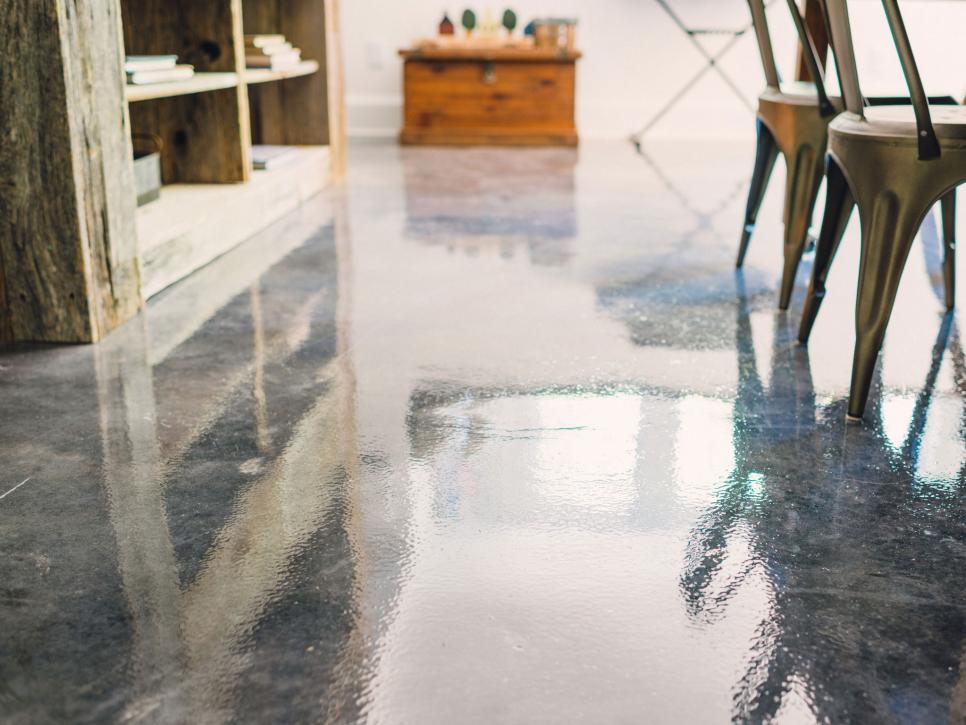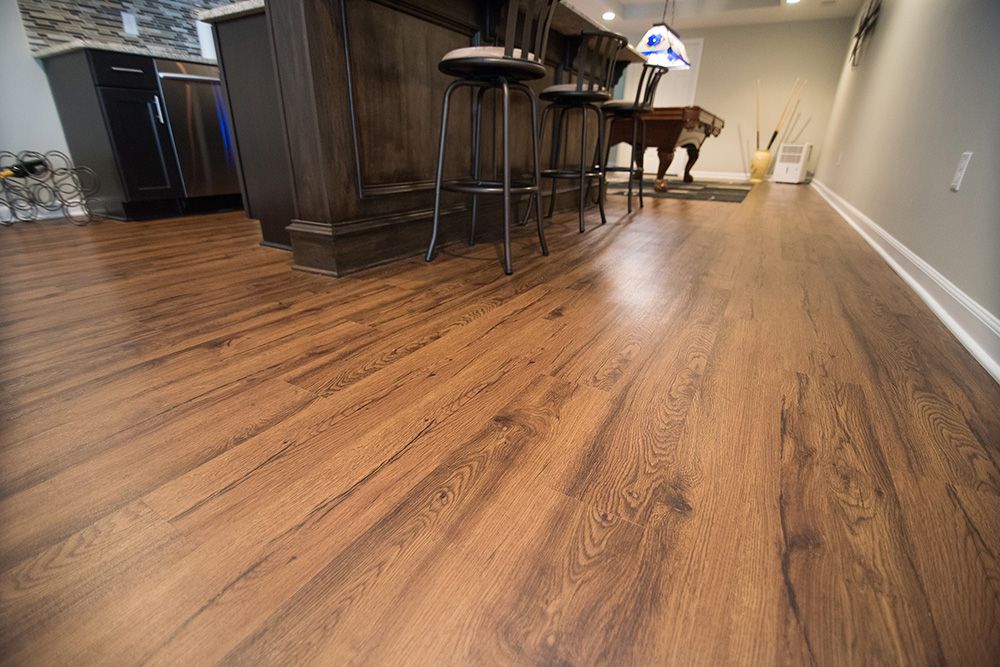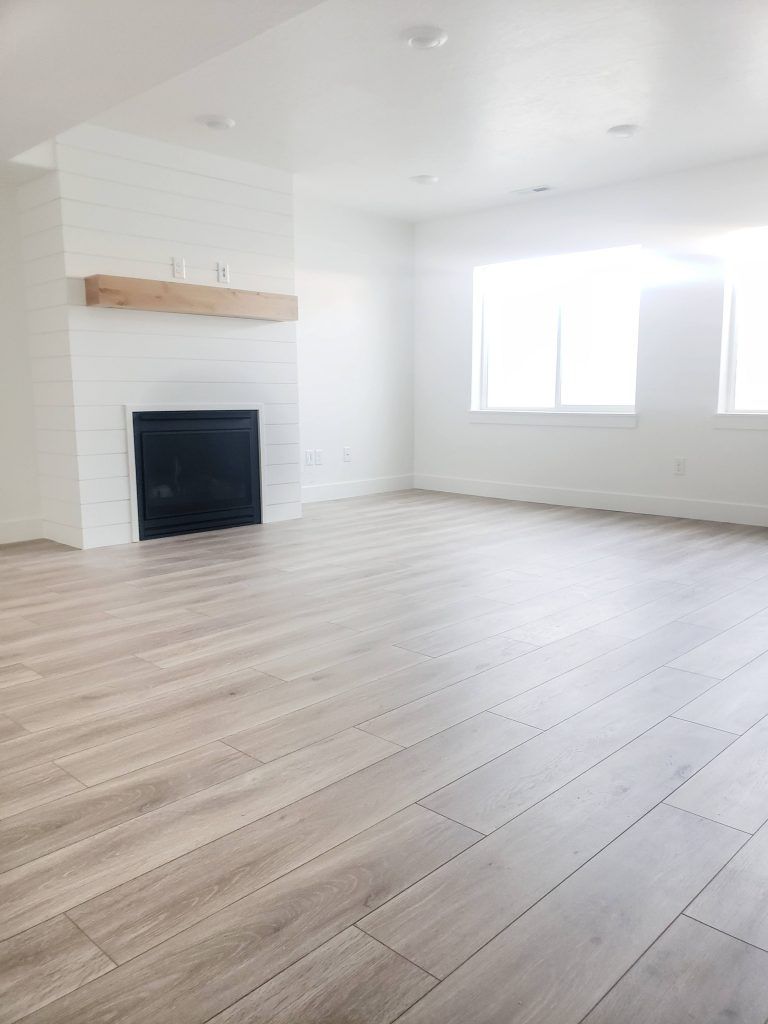Why Budget-Friendly Flooring is Perfect for Basements
When I began my basement renovation, flooring was a huge concern. I knew basements were prone to moisture, temperature fluctuations, and less foot traffic, so I didn’t want to over-invest in a space that wouldn’t see daily use. That’s when I discovered that budget-friendly flooring options were not only practical but ideal for this type of space. Here are some reasons why budget-friendly flooring is the best choice for basements:
- Cost-Effective for Low-Traffic Areas
Most basements aren’t high-traffic zones, so you don’t need top-tier, wear-resistant materials. Budget-friendly options like vinyl or laminate flooring can handle moderate use, making them perfect for spaces that won’t experience heavy foot traffic. - Moisture Resistance
One of the most important factors to consider when choosing basement flooring is moisture. Cheap flooring options, like vinyl planks or tiles, can offer excellent moisture resistance, which is a must in basements prone to dampness. These materials can handle occasional spills or water seepage without warping or swelling. - Easy Replacement
With affordable flooring, I felt more relaxed knowing that if any part of the floor got damaged, replacing it wouldn’t break the bank. A damaged section of vinyl tiles or laminate can be easily swapped out without having to redo the entire floor. - Variety of Styles
Budget-friendly flooring doesn’t mean sacrificing style. I was amazed at the variety of options available that mimicked more expensive materials. Whether you want the look of hardwood, stone, or tile, there’s an affordable option out there that can fit the bill. - DIY-Friendly
Many cost-effective basement flooring solutions are designed for DIY installation. This can save you even more money. I was able to install vinyl plank flooring myself with basic tools and a little patience, cutting down labor costs. - Flexible and Temporary
If your basement is a space that might evolve, such as a playroom that could turn into an office, you don’t need permanent, high-end flooring. Budget-friendly floors allow you the flexibility to change things up later without feeling guilty about sunk costs.
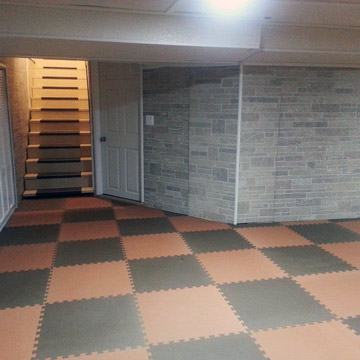
Top Affordable Flooring Options for Moisture Control
As I researched flooring options for my basement, moisture control was a top priority. No one wants to deal with mold, mildew, or warping floors due to a damp environment. Thankfully, I discovered several affordable options that perform well in moisture-prone areas, and I’m excited to share them.
Vinyl Plank Flooring
Vinyl plank flooring was my top choice. It’s cost-effective, water-resistant, and incredibly durable. The planks click together, making installation simple, and they come in a wide range of styles that mimic hardwood. Best of all, they don’t expand or warp when exposed to water, so they’re perfect for basements.
Ceramic or Porcelain Tile
For those looking for a flooring solution that’s almost impervious to water, ceramic or porcelain tile is a great option. Tiles are non-porous and resistant to moisture, so spills and leaks aren’t a problem. Plus, they’re fairly budget-friendly, and I found plenty of styles to choose from without breaking the bank.
Concrete Stain
If you’re working with an existing concrete floor, staining or sealing the concrete can be a very affordable option. It not only provides a moisture barrier but also gives the floor a polished, finished look. I considered this as a low-maintenance and low-cost solution, especially for a more industrial or modern aesthetic.
Rubber Flooring
While it’s commonly used in gyms, rubber flooring is also a great basement option. It’s water-resistant and provides excellent insulation against cold, damp concrete. Rubber tiles are easy to install and come in various colors, making them a budget-friendly choice for family rooms or play areas.
Sheet Vinyl
Sheet vinyl is another waterproof solution that fits within most budgets. It comes in large rolls, which can cover a basement floor with minimal seams, reducing the chance of water seeping through. Plus, installation is quick, which helps cut down on labor costs.
Engineered Wood
If you love the look of real wood, engineered wood can be a great compromise. It’s more moisture-resistant than solid wood because of its layered construction, and it’s less expensive. It’s not entirely waterproof, but with proper underlayment, it can be a viable option for drier basements.
DIY Installation: Saving Costs on Basement Flooring
One of the biggest ways I saved money on my basement flooring project was by opting for DIY installation. With a little patience and the right materials, installing flooring yourself can significantly reduce labor costs. Here’s how I tackled it:
Choosing a DIY-Friendly Material
Not all flooring options are suitable for DIY projects, so I made sure to choose a material that wouldn’t require specialized tools or skills. Vinyl planks, laminate, and even some types of tiles are designed with the homeowner in mind. They’re easier to cut, and click together, and don’t require messy adhesives.
Preparing the Subfloor
A key to a successful installation is prepping the subfloor. In my case, that meant ensuring my basement concrete was smooth and clean. Any cracks or bumps could cause issues later on. A quick self-leveling compound can smooth out uneven spots, which is simple enough to apply.
Using Click-Lock Flooring
Click-lock flooring, like vinyl planks, was a lifesaver. I didn’t need any glue or nails—just some patience to click the boards into place. It’s incredibly satisfying once you get into the groove, and the finished product looks professional even though I did it all myself.
Investing in the Right Tools
While DIY saves money, you still need a few essential tools. I bought a utility knife for cutting planks, a rubber mallet to tap the pieces into place, and spacers to ensure I left room for expansion. These tools were affordable, and I’ll be able to use them for future projects too.
Taking My Time
Rushing a DIY flooring job can lead to costly mistakes, so I made sure to take my time. I spent a weekend working on my basement floor, checking each step along the way. The process wasn’t rushed, and the results were worth the extra effort.
Saving on Labor Costs
By choosing DIY installation, I saved hundreds—if not thousands—on labor costs. While I put in the time and effort, the money saved was well worth it. Plus, there’s something satisfying about knowing I did it myself.
Durability on a Budget: Choosing Long-Lasting Materials
When I was choosing flooring for my basement, I wanted to strike a balance between affordability and durability. After all, there’s no point in saving money upfront if the floor needs to be replaced in a few years. I found that there are plenty of budget-friendly materials that are designed to last, even in tough basement conditions.
Vinyl Plank Flooring for Durability
Vinyl plank flooring was one of the first options I considered for its incredible durability. It’s scratch-resistant, water-resistant, and can handle heavy foot traffic. Even better, it doesn’t break the bank. I was impressed by how well vinyl planks could hold up against moisture and the daily wear and tear that basements often face.
Ceramic Tile: A Tough Option
If durability is your top concern, ceramic or porcelain tile is hard to beat. It’s almost indestructible and completely water-resistant. In my opinion, it’s perfect for basements that are prone to spills or even flooding. Plus, tiles are budget-friendly when compared to higher-end materials, and they can last for decades with minimal maintenance.
Concrete Flooring: Simple Yet Strong
For the ultimate in durability, concrete is unbeatable. It’s the base of most basements, so treating or staining the concrete slab can give you a long-lasting, stylish floor on a tight budget. I was drawn to this option because concrete is virtually indestructible, and with a good sealant, it’s resistant to moisture and cracking.
Laminate Flooring: A Budget-Friendly Workhorse
Laminate flooring is another material that can stand the test of time in a basement setting. It mimics the look of wood but is much more resistant to moisture and scratches. While it may not be as long-lasting as ceramic tiles, with proper care, laminate can last a good 10-15 years without needing replacement. Plus, the affordable price makes it easy on the wallet.
Rubber Flooring for Resilience
While it’s not the most common choice for basements, rubber flooring offers serious durability. It’s water-resistant, provides great cushioning, and handles heavy furniture and equipment well. Rubber tiles are affordable, and I loved how easy they were to install. It’s perfect for basements that serve as home gyms or playrooms.
Engineered Wood: A Real Wood Look That Lasts
If you’re set on a wood aesthetic, engineered wood is a fantastic alternative to solid wood in basements. It’s more resistant to moisture due to its layered construction, and it holds up well over time. While it’s a bit more expensive than vinyl, I found that it offered a nice balance of affordability and longevity.
Creative Ways to Upgrade Basement Floors Without Breaking the Bank
When renovating my basement, I wanted to give the space a polished, upgraded look without spending a fortune. I realized that it’s possible to get a high-end feel on a budget with a little creativity. Here are some clever ways to upgrade basement floors without overspending:
Staining the Concrete Floor
One of the most affordable ways to give a basement floor a facelift is by staining the concrete. Concrete stains come in a variety of colors and finishes, and they can completely transform a dull, gray floor into something visually stunning. I considered this option for my basement because it’s budget-friendly and easy to apply, and it gave my space a modern, industrial feel.
Using Area Rugs for Comfort and Style
Sometimes, the simplest solution is the best. After installing budget flooring like vinyl or concrete, I added area rugs to make the space feel more cozy and inviting. Not only do rugs provide warmth, but they’re also a cost-effective way to add personality and style. Plus, I could swap them out anytime I wanted a fresh look.
Painted Flooring for a Unique Look
If you want to get creative, consider painting your basement floor. Whether you’re working with concrete or wood, there are paints designed specifically for floors. I’ve seen people create beautiful patterns like checkerboards or geometric designs, all with just a few cans of paint. It’s an inexpensive way to personalize the space and give it a custom look.
Mixing and Matching Flooring Types
One of the most creative ideas I had for my basement was mixing different types of flooring. I used vinyl planks in the living area but added tile in the laundry zone. This mix-and-match approach helped me save money by only using pricier materials in smaller sections of the basement, while affordable flooring options covered larger areas.
Peel-and-Stick Vinyl Tiles
Peel-and-stick vinyl tiles are an affordable and easy way to upgrade a basement floor. They’re available in various designs, including ones that mimic more expensive materials like marble or wood. The best part? They’re easy to install, and if one gets damaged, you can replace it without much hassle.
Cork Flooring for a Warm Feel
Cork is a surprisingly affordable and eco-friendly option for basements. It’s soft underfoot, which makes it great for kids’ play areas or home gyms. It’s also a natural insulator, helping to keep the basement warmer. I loved how cork added warmth to my basement, both visually and physically, without blowing my budget.
Maintaining Cheap Basement Floors: Tips for Longevity
Once I had my budget-friendly basement flooring installed, I knew I needed to keep up with proper maintenance to ensure it lasted as long as possible. Even affordable flooring can look great for years if you take care of it correctly. Here are the maintenance tips that worked for me:
Regular Cleaning Is Key
No matter what type of flooring you choose, regular cleaning is essential for maintaining it. I make sure to sweep or vacuum my basement floors weekly to remove dirt and debris. For vinyl and tile, a damp mop with a mild cleaner works wonders in keeping them clean and shiny without damaging the material.
Address Moisture Issues Promptly
Basements are notorious for moisture problems, so staying on top of leaks or spills is crucial. I’ve installed a dehumidifier to control the humidity levels in my basement, which has helped prevent mold and mildew from forming under the floor. If any spills happen, I clean them up right away to avoid long-term damage.
Use Furniture Pads
If you’re moving furniture around on your basement floor, especially with materials like vinyl or laminate, it’s essential to use furniture pads. These prevent scratches and dents from heavy items. I’ve also made it a habit to lift rather than drag furniture when rearranging my basement.
Reapply Sealants for Concrete Floors
For those who’ve opted for concrete floors, it’s important to reseal the surface every few years. A good sealant helps protect against moisture and stains, which can extend the life of your floor. I’ve found that this small investment of time and money pays off in the long run.
Prevent Scratches with Rugs and Mats
Placing rugs and mats in high-traffic areas, like entryways, can help prevent wear and tear on your basement floor. I’ve placed mats at the door leading into the basement and larger rugs in the main living area. This not only protects the flooring but also adds some extra comfort.
Check for Wear and Tear Regularly
It’s a good idea to inspect your basement floor every few months for signs of wear. If you notice any cracks in tiles, scratches in vinyl, or peeling in laminate, addressing them early can prevent bigger issues later. I make these checks part of my regular maintenance routine, and it’s helped me catch small problems before they become expensive fixes.
Common Mistakes to Avoid When Choosing Cheap Basement Flooring
When I was choosing my basement flooring, I learned that there are some common mistakes many homeowners make when trying to save money. Avoiding these pitfalls can help you get the most out of your budget without compromising on quality.
Ignoring Moisture Issues
One of the biggest mistakes I’ve seen is not addressing moisture problems before installing flooring. Even if you’re on a tight budget, it’s worth investing in proper moisture barriers or waterproofing treatments. Skipping this step can lead to mold, mildew, and damaged floors down the line.
Choosing the Wrong Material for the Space
Not all cheap flooring options are suited for basements. I’ve heard of people trying to install solid hardwood or carpet in damp basements, only to end up with warped wood or moldy carpet. Stick to moisture-resistant materials like vinyl, tile, or concrete for long-lasting results.
Not Considering Installation Costs
While the material might be affordable, installation costs can add up quickly if you’re hiring professionals. I chose a DIY-friendly option to keep labor costs down. Make sure to factor in installation when budgeting for your basement flooring project.
Skipping Underlayment
Another mistake is skipping the underlayment, especially for floating floors like laminate or vinyl planks. Underlayment provides a moisture barrier and adds cushioning, making the floor more comfortable underfoot. It’s an inexpensive way to extend the life of your floor, so don’t skip it.
Rushing the Installation Process
I’ve learned that rushing through the installation can lead to costly mistakes. Take your time, especially with DIY projects. Properly aligning tiles or planks, checking for gaps, and ensuring the subfloor is clean and level are critical steps that shouldn’t be skipped.
Choosing Looks Over Functionality
It’s tempting to pick a floor based solely on how it looks, but functionality is key, especially in a basement. I made sure to balance aesthetics with durability, moisture resistance, and ease of maintenance. This way, I ended up with a floor that not only looks great but also performs well in a basement environment.
DIY Basement Flooring Ideas – Affordable DIY Flooring Options
Basement Floor Ideas basement flooring, flooring, finishing
Related Posts:
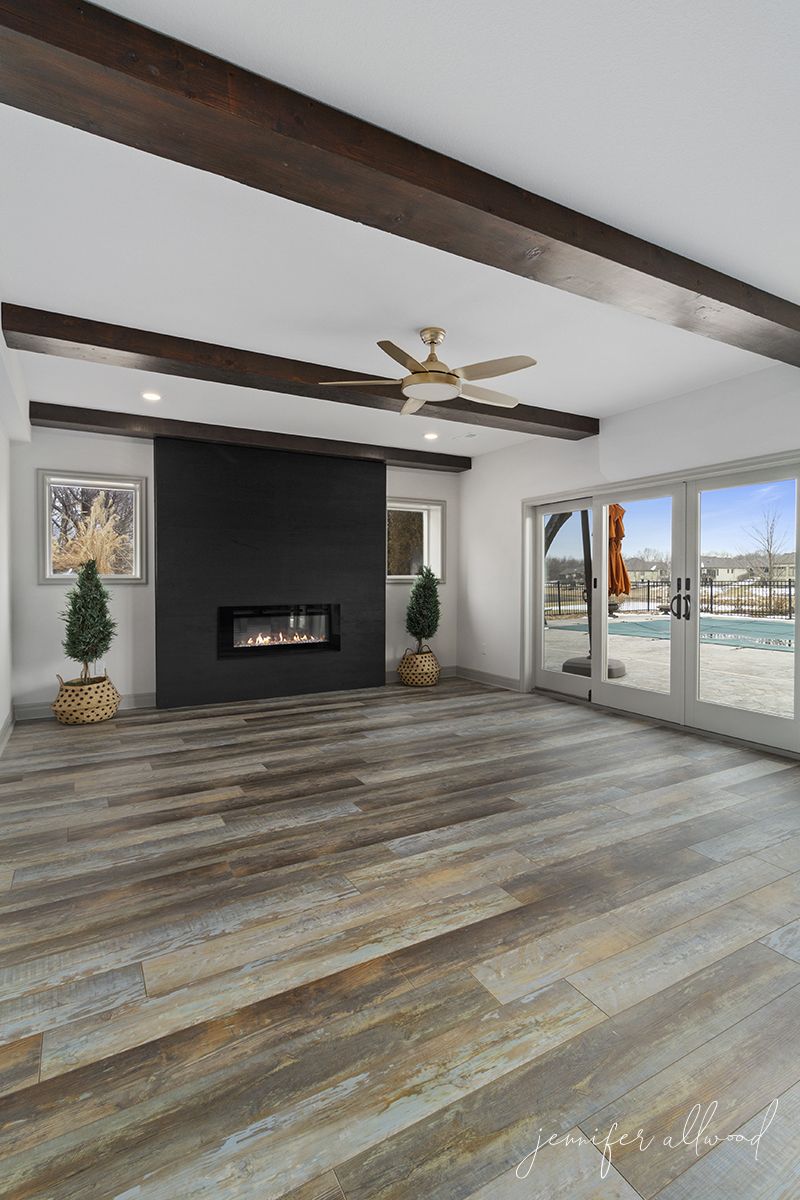
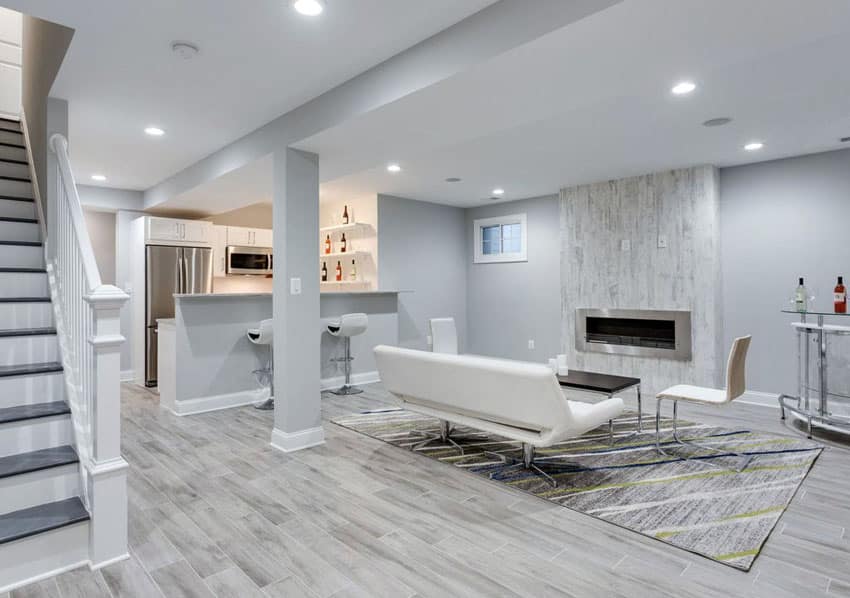

.jpg?widthu003d800u0026nameu003d11513489635_f12521f2a2_k%20(1).jpg)
